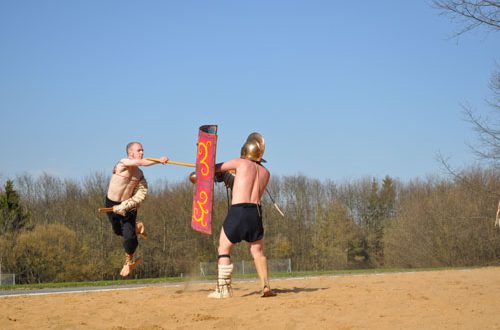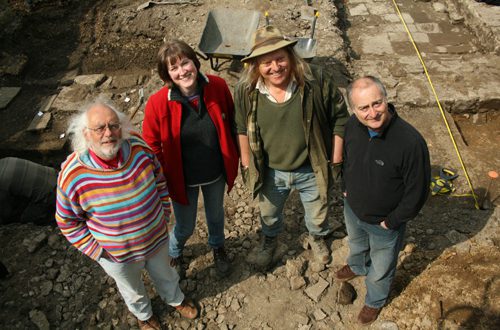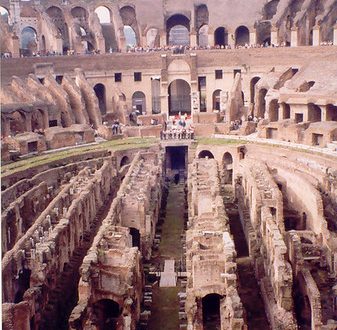 Experts think that the head of a marble statue depicting a young boy, found at Fishbourne Roman Palace in Sussex 45 years ago, might actually be the emperor Nero. This theory has yet to be proven and a 3D laser scan of the marble head on 15 October may provide further evidence.
Experts think that the head of a marble statue depicting a young boy, found at Fishbourne Roman Palace in Sussex 45 years ago, might actually be the emperor Nero. This theory has yet to be proven and a 3D laser scan of the marble head on 15 October may provide further evidence.
The curator of archaeology at Fishbourne Roman Palace, Dr Rob Symmons, and archaeology experts from Bournemouth University, Dr Miles Russell and Harry Manley are working on this project. They noticed during the past year that there are several factors that suggest the marble portrait could be Nero.  The marble head is ‘extremely well made’ in a rare and expensive marble indicating that it was made of or for someone very important.
The marble head is ‘extremely well made’ in a rare and expensive marble indicating that it was made of or for someone very important.
Portrait of an Emperor
Dr Russell told me earlier today that the statue was found in the rubble of a Roman palace at Fishbourne during an excavation in 1964, but is likely to be associated with a previous Neronian-era palace.
Several things are already known about the statue: it is an import from Italy; although only the right-hand side of the face remains, it shows a very realistic and life-like portrait. The remaining part matches up with two other known portraits of nero as a young boy – held in the Musee du Louvre and in Museo Nazionale d’Antichita in Parma. There is also a small remaining fragment of a laurel wreath at the back of the head. Just two leaves are visible – but this too suggests that the statue has an imperial connection, according to Russell.
The statue was found in the foundations of a Roman palace being excavated by Sir Barry Cunliffe at Fishbourne – the fragment had been used as part of the rubble. It is a very high-quality statue, finely crafted of expensive Italian marble. The fact that it has been destroyed and thrown into the foundations of a Roman palace is also in keeping with the ‘damnatio memoriae’ – the condemnation of Nero by the senate following his death. During this period images and monuments to Nero were destroyed – including many marble portraits, and much of his Domus Aurea.
According to Dr Russell, he and his colleagues will be taking the fragment out of its case on 15 October for a laser scan. Because first century AD imperial portraits were so realistic, the team hopes to be able to establish a facial likeness to other known statues of Nero from that period. As part of the project a bronze portrait of Claudius from the British Museum will also be scanned. The team thinks this statue also bears more resemblance to Nero than to his uncle.
 Nero committed suicide in 68 AD and was deeply unpopular in Rome. After 14 years of tyrannical reign, he was ousted by Galba, who had the support of the Pretorian Guard.
Nero committed suicide in 68 AD and was deeply unpopular in Rome. After 14 years of tyrannical reign, he was ousted by Galba, who had the support of the Pretorian Guard.
The statue head at Fishbourne was until recently thought to have represented King Cogidubnus or one of his relatives. Cogidubnus was a first century AD king in Roman Britain, believed to have lived in Fishbourne Villa.
Dr Symmons is quoted in the Telegraph as saying: “This is very exciting as the scan will allow us to see for the first time what the boy really looked like and may also reveal his identity. We have always assumed he was related to the Royal family who lived here but it may be that it is even more special and is a rare depiction of Nero.”
Photos by Dr Miles Russell, Senior Lecturer in Prehistoric and Roman Archaeology at Bournemouth University.



